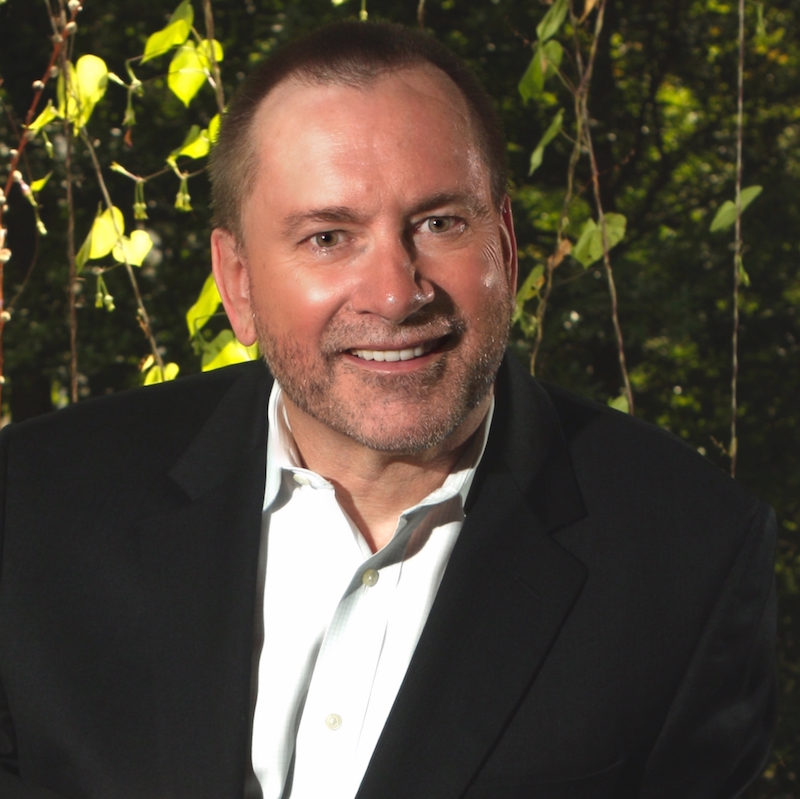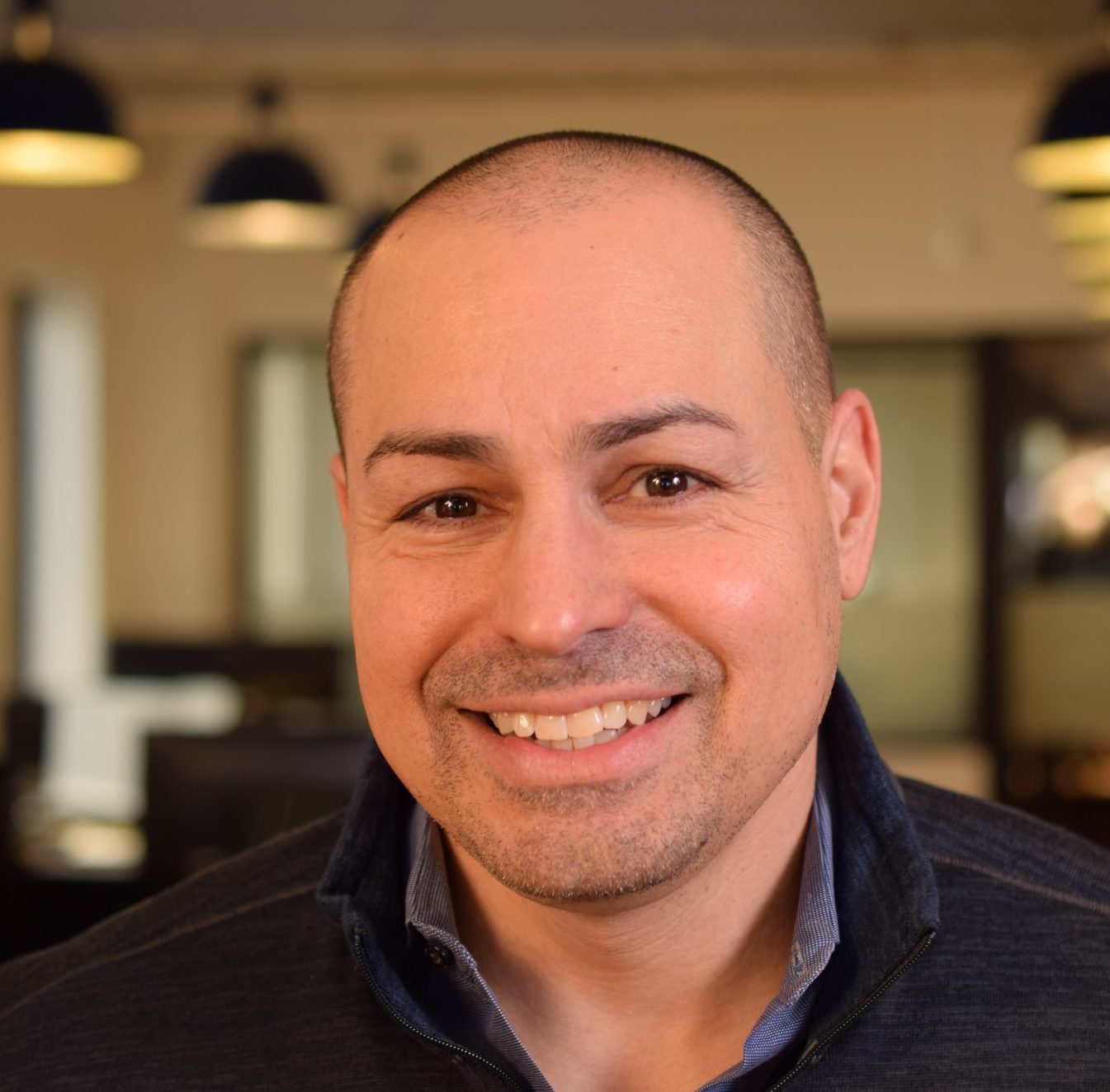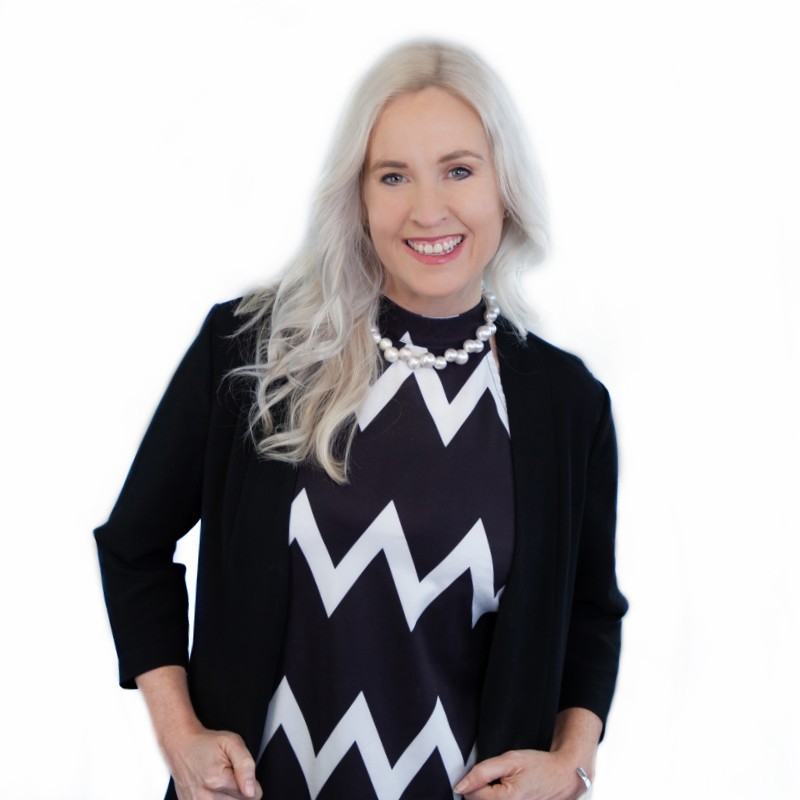When you look at your team members, what do you see? Do you see people who are there to get your projects done? Or individuals with deep dreams and ambitions of their own who happen to be partnering with you for a season?
The Digital Workplace welcomes back Bill Jensen, the CEO of The Jensen Group and author of The Day Tomorrow Said No.
Running out of dreams
Through conversations with leaders and employees, Bill found that less than 10% of people realize their dreams at their current place of work. This paints a gloomy picture about where the future of work is headed.
The core of Bill’s new book is that the systems we’ve created are letting the workforce down—people are lonely, unsatisfied with work, and struggling to cope. And so, these structures need to change to ensure the future of work is positive and more people achieve their dreams.
Bill says that in most of his consulting or speaking engagements, leaders are often reluctant to talk about pressing issues. They’d rather project positivity to keep everyone motivated than talk about harsh realities. But the best course of action, he says, begins with empathy and creates an understanding of what people go through. “You can’t have an amazing, positive future without addressing how many people you’re leaving behind.”
The 3Bs
Bill says there are three primary roles that people will play in the future or, as he calls them, the 3 Bs—believers, breakers, and builders. Believers are a majority of us—those who rally behind causes and orchestrate conversations that have a direct impact on the future. Breakers are innovators, visionaries, and the breakers of tradition who build things that we never thought possible. And the builders, Bill says, are individuals that work on making existing systems function better. They make small changes to existing systems or rebuild entire infrastructures to help them work more efficiently.
Leadership and thinking in paradox
“The provocateurs, the changers, the breakers are the ones that create the new future.” But what can leaders do to be aware of people in these roles? And how can they ensure breakers and builders have the right influence?
Bill says leaders need to stay aware of how systems and structures have changed and be responsible for the people they affect. They need to be willing to have difficult conversations about two contradicting ideas simultaneously—thinking about the people being left behind in light of being profitable.
Re-dream the dream
The pandemic has shown us the importance of being connected. Bill says it’s given us a unique opportunity to rethink everything. But it isn’t an episode we can put behind us. There’s a lot that still needs change. “When work becomes the killer of dreams, we need to re-dream work, so that more people can achieve their personal dreams where you work.”
Links
Bill’s book: The Day Tomorrow Said No
Quotes
3:09 – “Less than 10% of us can achieve our dreams where we currently work. What kind of work are we setting up? What kind of digital workplaces are we creating?”
20:38 – “When work becomes the killer of dreams, we need to re-dream work, so that more people can achieve their personal dreams where you work. No, your responsibility is not for their life.”
Welcome back to The Digital Workplace podcast. Today we have a repeat guest. We have Bill Jensen, Mr. Simplicity, on the show. Hi, Bill.
Hi.
Great to have you, man.
Thank you for once again having me Neil.
Yeah. We interviewed you a long time ago and then had you back for our Digital Workplace Day, because you are a big part of that. And now starting off 2021, back on the show again. How have things been for you?
Doing great. I’m thrilled to announce a new book. And that’s what we’re here to chat about.
Yeah. So, this book you had, you’ve been working on for a while. And it is definitely not a typical, like business book, I guess. So, give us the title. What brought it on?
Well, the title is ‘The Day Tomorrow Said No’. And it’s a leadership fable about the future of work. So, what brought it on was, for a decade or two I’ve been trying to talk to leaders about we need to change more than we’re changing, especially as we build a digital future. We’re leaving the human side of the digital future. And all the consulting I did, all the speaking engagements I did, all the writing I did, leaders go, “Yeah, yeah, yeah, that’s important. But something’s more important.” And there’s always the urgency of the moment. And I began writing it as an ode to Al Gore’s ‘Inconvenient Truths’. I started to write these are the inconvenient truths about the future of work. And then I realized, if I’m writing it the same way I’ve always been doing it, you know, the ‘Dear leaders, you need to pay attention’, nobody’s going to pay attention.
So, I reached into what I learned about how to communicate with others. Strong messages, deep messages. And that was always through human history. It’s always been storytelling. So, I recreated the entire thing as a fable based on the future of work. And the core idea, Neil, is actually, well, everything in the book, even though it’s a fable, is data driven. Real data about the future of work. And I’ve got a question for you. I asked this and this was the core of the book. I asked thousands of leaders around the world and work-a-day people, “Can you achieve your dreams where you currently work?” Now, if you took the average representation of everybody, not just the A players, not the poor performers, but everybody, you mix them all together, what do you think from 0% to 100%, what do you think somebody would say the average number would be, about “I can achieve my dreams where I currently work.”
If you talk an average, let me put it at 20%. Lower? Lower? 10?
9.8%. Think about it. That sucks. Less than 10% of us can achieve our dreams where we currently work. What kind of work are we setting up? What kind of digital workplaces are we creating? So, the impetus for the story was, we’re running out of dreams. So, there are three characters in the book – Today (current), Tomorrow (future) and Little One, who is the workforce of the future. And the title of the book comes from ‘The Day Tomorrow Said No’, comes from the fact that Tomorrow, the future, is saying “No. We’re leaving too many people behind. I’m running out of dreams. We can’t create a future. There’s not enough dreams.” So, the fable begins with Tomorrow, the future, saying, “No, I’m not taking the hand off, to Today.”
Yeah, well, let’s dive into this a little bit. So, you have three personified people, Today, Tomorrow, Little One. And I think it sounds like you’re wanting most leaders to identify themselves as the Today character who is very aptly, well intentions, like thinks they’re doing the right thing, is focused on the pressing work that’s going on now, but gets caught up in this, what you call more better, faster as one word. So, explain, again, the person you’re writing to, how they should see themselves in a new light?
Well, the story takes everyone through the journey. And I’ll fast forward through the journey. But Tomorrow and Little One go searching for solutions because we’re running out of dreams. We just don’t have enough hope for the future and we’re leaving too many people behind. And before I get to the solution, the more important thing is I had to totally shelf this book and revamp it because of COVID. And COVID-19 2020, the dumpster fire that was 2020, proved two things that I tried to build the book on. The first is that all of the systems that we have currently built, are failing. Whether you talk education, whether you talk business, healthcare, no matter what you’re talking about, the systems are leaving too many people behind. Too many people are dying. Too many people are lonely. Too many people are struggling. So, that’s one side of the coin.
The other is, the unbelievable infinite resiliency of the human spirit through all of these crises where people are helping each other. So, I’m building on both the push and the pull of the awesomeness of humanity as well as the difficulty that our systems need to be rebuilt. So, that’s what Today, Tomorrow, and Little One, the struggle they’re going through. How do we keep things going? “I can’t stop the world”, says Today. I have to keep production going, I have to keep profits going, I have to keep everything going. How do I keep it going? And they journey through it. And Tomorrow and Little One discover there are three, there are only three jobs in the world. You may have different job titles. You may have different job functions. But all of us have three different sets of work that we do.
Before we get into the three types, I want to bring this up. This journey that they go on. And first off, I mean, the way you tell the story is great. We should also mention that it’s extremely well illustrated. This is not just like, when I think of a business fable, it’s like, okay. It’s like a use-case case study type of thing. It’s not like that. This is like poetry that’s there, but it’s also very well illustrated.
And let me give credit to my partners in this, Yuko and Miyaho. I reached out to them in Japan. So, I hired Japanese illustrator, anime illustrators, to illustrate the story.
And at this point in history who better to visually depict a story than anime artists. So that’s great to do. And these people that we’re talking about, Tomorrow and Little One, they’re going on this journey, they go out and actually try to talk to people. One part that gripped me in the book was when they actually talked to people, they’re both fiercely encouraged by what they see, and that resiliency that you talked about. And they’re also extremely discouraged by what they see, of the weight that’s on people and the fact that all these systems aren’t really set up to bring people in. And that just was really a powerful thing that you mentioned, too. And I think all of us would find that. Like if you really went out and tried to figure out where we are in the world, you would have both those things going on at the same time. The paradox exists.
And in my consulting and speaking engagements and workshops with leaders, it’s like, “No, no, we can’t talk about that depressing stuff because we have to keep everybody motivated.” No. The whole point is nobody’s getting motivated unless you deal with the real truths. And this comes from a cult consulting assignment that I learnt from that was given to me by people who first coach me and then I do all the time. It’s now a TV show called The Undercover Boss. But I’ve learned the best best best consulting I’ve ever done was having leaders do work-a-day people’s jobs for a day. Really begin with empathy. And that’s, by the way, the core of something called ‘Design Thinking’, is having empathy. So, the book is threaded throughout with empathy, with the struggles that everybody is having, and a more resilient, positive future. And they never leave one behind. You can’t have one without the other. You can’t have amazing, positive future without addressing how many people you’re leaving behind.
Absolutely. Well, let’s jump into, you said there’s these three kinds of core jobs that will be there in the future. So, walk us through these.
The three are the 3 B’s – believer, breaker, or builder. No matter what your job function is, and it may be a mix of all three or one or two of them, but the believers are the ones like the Steve Jobs commercial that ran for Apple that featured Einstein and all the others that, you know, way back when it said, these are the believers, these are the ones who break the mold. The believers are the ones that keep going forward, that keep believing in the future and rally behind things, but also challenge things. We have a teenage Swedish woman who is challenging our entire thinking on global warming right now. These are the kind of believers that we have out there that are saying, yes, I believe in us. I believe in you. And we have to protest, and we have to challenge, and we have to talk back to power about the things that are not working.
So, what the core of the book is, the believers that are out there, and that’s most of us, we need to be accountable for changing the conversation that changes the future, even if we’re not Elon Musk or others that are building the new infrastructures. We need to, all of us, participate in changing the future by how we change the conversation. So, changing the conversation of the believers. And you have to stand up for, against the things that are being done wrong, to move forward. Believers do that. Breakers are, let’s say, the Elon Musk’s of the world, the Steve Jobs, the others, that create completely new things that we never conceived possible. Even the makers of Zoom and a few other technologies never thought that 2020, it would go off the way it has, because we needed those technologies to stay together. So, the breakers are the ones that break from tradition and create new things.
And the builders are the ones that build the new systems. Not just the technologies, but the entire thing like the way teams work together. It can be small like creating new ways for teams to work together. It can be big like the entire new way we built electric cars and the entire infrastructure that needs to be rebuilt from the petro-chemicals perspective. So, all of us have at least one, if not two, or three jobs. We all need to be believers, breakers and/or builders. And the book goes through this, how those are solutions to our current challenges.
Give some examples of like, if you are a CEO, you’re leading a team, you read this, you’re like, “Yeah, yeah, I believe this is all good.” But when it actually comes down to individual conversations you’re having in the office or team discussions that are going on, what are ways that these leaders are putting down or at least backburning people who are believers? Let’s just take them first. So, what are some ways that they might need to wake up to how they are kind of pushing these people back and not allowing them to do their work?
Well, you know this fully from the digital workplace. It’s like, yes, we love open forums, but not too much. We don’t want you talking smack about what I just implemented. Workplaces still are not emulating what Jeff Bezos built decades ago which is the feedback mechanism on Amazon. One of the reasons Amazon took off was not just the frictionless economy of ordering a book, originally, just books, through the internet. It was that people could talk back about the book and they could create a community and the reviews. And you can edit the reviews. If everybody says my book stinks, I have to deal with it. If everybody says I love it, I can build on it.
It’s funny. That’s really Amazon’s product in a lot of ways. Even I don’t order much on Amazon. I don’t like to order a lot on Amazon. But I will go there and check out all the reviews before I order it somewhere else.
And there’s a mix of truth telling. Even the best products out there have some flaws, have some things, and it’s okay for the truth to go out there. So, it’s an understanding that we have unleashed this thing. And right now, we’re dealing with social media, dealing with problems that they unleashed it so far that we’re getting hatred and division. We need to be able to create conversations where we can come together, allow diversity. Diversity is not just color, or ableness, or A players or C players. It’s diversity of thought. What we need to allow and foster and create is the environment where people can openly debate in positive ways but push things forward.
For sure. Let’s focus on the breaker thing. I spent some time in India and I really got attached to this concept they have of, at least for some, for Hindus, there’s a God called Shiva, who is called the God of Destruction. And my upbringing didn’t prepare me for that, to say like, “Oh, if it’s destruction, it’s bad. Like, that’s so horrible.” But really, this is the job of this God, that is to come through and just destroy everything so that it can be rebuilt again. And there’s so much wisdom in that that I’ve seen in the world as I’ve moved on from that. And really, personally, I get very attracted to people. I feel like you’re a breaker in this way. Like you’re somebody who likes to come and just smash things and say, “Hey, look, this is not working. We need to do something different.”
Positively smash things. Not just to be the pain in the ass that people want to get rid of, but you destroy it so that you can move forward. And human history. Any of us that have ever lived in a major city like New York, New York continues to evolve. There are things there from the Baroque period, from the Art Deco period, from the Modernist period. There’s all stuff living together. Amazing new technologies and ancient buildings. And they’re all preserved and yet rebuilt, constantly. So, the God of Destruction is one we need to honor in our everyday lives, whether we’re secular or religious or not, or whatever, you know, God or religion we pray to. That is crucial. And the provocateurs, the changers, the breakers are the ones that create the new future. We wouldn’t have been able to live without communities like Zoom and other technologies that created communities like Zoom and others if somebody hadn’t changed the way we did this before the COVID-19 crisis.
What’s another way that CEOs and leaders need to be aware of this role and not try to snuff those type of people out?
Be aware of how many people we are leaving behind. Yes, I know, you’ve got your bottom line, and you got to be profitable, and you got to furlough people and let people go. But be aware of just what our systems and structures are doing and be responsible for that. Be accountable for saying we’re leaving too many people behind. I once did a speaking engagement in Silicon Valley. It was for one of the world’s largest companies. And it was not Facebook. But I asked people about this woman who was really struggling. That she was right now outside in the streets of the Bay Area living in her car. And do you have any idea who she works for? And the answer was, she worked for Facebook. Because the environments, the ability to buy a house or rent something in the Bay Area is just skyrocket. You couldn’t get anything. So, people were like living for weeks or months or a long time in their car, because they couldn’t afford a place to live. And this is like the world’s greatest economy and the world’s worst situation.
It comes back, Neil, the answer to your question I’m realizing as I’m answering, comes back to our original statement, it’s the two sides of the coin. We have to have conversations at work where we recognize and address and openly discuss how many people we’re leaving behind, as well as all the good and amazing stuff that we’re doing. Leaders need to be able to have both sets of conversations at the same time.
I feel like this may be one of the essential skills of leadership, for the future economy and digital workplaces, is the ability to think in paradox. And the ability to hold two separate what seem like opposite ideas at the same time and to move forward with that and to be comfortable with that. Because if we look at this era we’re trying to emerge from, of work, it was very much like just one thought, like, this is good or this is bad. We either do it or we don’t do it. This helps me or it doesn’t help me. But to understand that it can be both and we need to be able to deal with that and recognize that it’s not always comfortable to deal with those things. But we also shouldn’t slip into the pessimism that says, “Oh, there’s nothing good. I can’t do anything about this.” So yeah, I think that really is. Especially if you’re talking about CEOs, people who are really leaving these things, they have to be able to hold both those things very tightly during this leadership time.
A great example of this is the conference and community TED, the TED conferences, where the T stands for technology. They are currently rethinking their brand. Because from its beginning, technology was the God. It was going to solve all things. And now they’re realizing, oh wait, it also created a shitload of problems. So, we need to be honest about both the problems it’s causing and the amazingness that it creates. So, we need to be able to, as you say, hold those two contradicting things together at the same time and be more open about it. Yes, leaders need to be the rah rah, we believe in the future. I believe in you. Leaders, we need that. We absolutely do. But we also need the open, difficult conversations that are not happening right now.
And that’s what we love talking about on this show. With The Digital Workplace, we talk about, especially like the feature people who are building those new systems, those new reimagined systems, something that’s new because we need to be inspired. We need to hear practically what are people doing around leadership that’s different? What are people doing around measuring productivity that’s different, that represents something that’s new that we haven’t seen before.
And COVID gives us this amazing, again, it was horrific in some ways, but it’s also an amazing opportunity to rethink almost everything. We’ve learned so much about the human need to be connected and all the soft issues. Throughout the whole year we’ve realized how important it is for all of us to be connected, to be able to hug each other, to be able to high five each other, to love each other. Well, we need to rebuild that. We can’t just start and say, ‘Well, 2020 is over. Let’s move on.’ We need to build that into our systems. Part of the book is also based on graffiti that came out of COVID early on in Hong Kong. And it said, ‘We can’t return to normal because normal was precisely the problem.’ We need to rethink things. When work becomes the killer of dreams, we need to re-dream work, so that more people can achieve their personal dreams where you work. No, your responsibility is not for their life. Your responsibility is for the bottom line and shareholder and profits and all that other stuff. But create an opportunity where people can create their own dreams.
Very cool, Bill. We love talking about these topics. I’m sure everyone is eager to know where they can go and pay lots of money for your book. So, tell them what the deal is there.
I’ll give you a heads up. You don’t have to pay lots of money. You get it for free.
That’s pretty crazy.
No. It is. The website is Tomorrow Said Yes. And the end of it is, dot es. Tomorrow Said Yes, y.es. And you go there, and I’m actually paying for the book. I’m giving it away for free. You have to pay for shipping. But for the cost of shipping, you’re getting one book, print, you’re getting a digital copy of the book, and you’re getting over a dozen free tools that support the tool. So, please go to ‘Tomorrow Said Yes’ and sign up to get the book.
Well, excellent. We’ll include that link in the show notes. Make sure everyone gets that one. And this won’t be the last time we’ll hang out with you. We’ll be doing a lot more stuff throughout this quarter and other times to talk about it because this is the work, talking about the same theme. So, we’re excited about this. So, thank you for your work.
I think the thing that we talked about as far as the ongoing conversation is our job, yours, and mine, is to ask the questions that no one else is asking. To have the conversations that need to be had. So, hopefully we can continue that together.
Bill Jensen makes it easier to do great work.
He makes it easier to leap into tomorrow.
- CEO, The Jensen Group, change consultancy he founded in 1985.
- Over 30 years researching how work gets done.
- Over 1,000,000 people interviewed/surveyed.
- This is his 9th book.
- Helps leaders translate digital transformation into people transformation.
- He travels globe delivering consulting, coaching, keynotes, workshops.
- Personal Life Fantasy: Bicycle around the globe via breweries.












